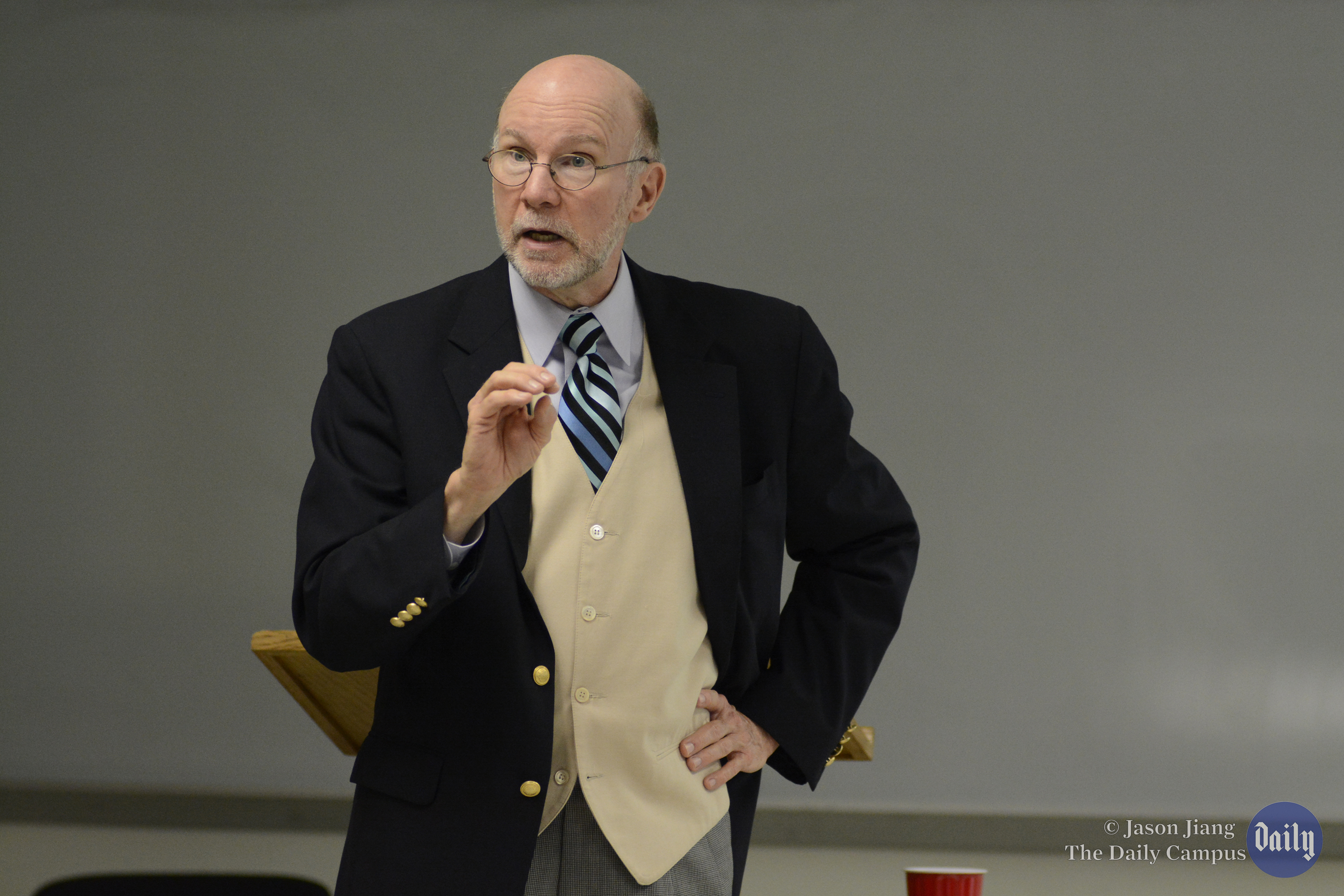 “Whereof what’s past is prologue,
“Whereof what’s past is prologue,
what to come In yours and my discharge.”
William Shakespeare, The Tempest.
A line from Shakespeare’s last play decorates a corner of the United States Archives building in Washington, DC, as well as providing the title for a required course in the UConn School of Nursing’s final baccalaureate semester: Nursing’s Past as Prologue.
The School of Nursing’s commitment to innovative ways of studying and celebrating nursing’s history was born with the first dean, Carolyn Ladd Widmer, and the first nursing faculty member whom she hired, Jo Dolan. The School’s signature Josephine A. Dolan Nursing History Collection provides visitors to the Storrs Hall Widmer Wing with vignettes from nursing’s history: permanent tableaus of a sickroom from the era of Florence Nightingale, an iron lung from the 1950s, military nursing uniforms from World War I to the present, an exhibit on the technologies of nursing, and displays on Connecticut nursing and the life of our founding dean.
In addition, two vitrines feature changing exhibits, currently one marking the 35th anniversary of the HIV/AIDS epidemic and another on World War I nursing (marking the 100th anniversary of America’s entry into the war). In storage there are also hundreds of artifacts, documents, and ephemera, some housed in the University’s Archives and Special Collections. Finally a modest collection of books, many rare and out of print, is available in the Eleanor Krohn Herrmann Reading Room.
The School’s earliest curriculum included a first-year course on the history and theory of nursing. Its instructor, Professor Dolan, so developed a passion for the study and teaching of history that she became the author of a standard textbook and developed the collection of documents, ephemera, and artifacts that bears her name.
Nursing in Society: A Historical Perspective became the standard textbook for the introductory study of the health profession’s origins and development. Begun as a revision of Minnie Goodnow’s classic History of Nursing, it went through eight editions, with an additional Japanese translation.
Over the years the School’s Dolan Collection has had many stewards; after Jo Dolan, Professor Eleanor Krohn Herrmann and her doctoral student Mary Ann Cordeau (now Associate Professor of Nursing at Quinnipiac University), Assistant Professor Jennifer Casavant Telford, and Associate Professor in Residence Thomas Lawrence Long, the current curator.
In teaching Nursing’s Past as Prologue, Long employs his background in medical humanities to provide students with the social, cultural, and historical contexts of health professions with a focus on nursing. In that course he has assigned students one artifact or document from the Dolan Collection that they photograph, research and write up for a blog post. The Dolan Collection’s blog features some of these posts, as well as other news about the collection or significant moments in nursing history: http://wp.dolancollection.uconn.edu/
This year as curator of the collection, Long collaborated with UConn’s Archives and Special Collections and its William Benton Museum of Art to create exhibits illuminating historic responses to the HIV/AIDS epidemic, first reported 35 years ago in 1981. In addition, he arranged for a traveling exhibit from the National Library of Medicine, Surviving and Thriving: AIDS, Politics & Culture, to be shown in the atrium of the Widmer Wing.
In a rapidly changing world with an insatiable appetite for innovation, UConn School of Nursing’s students are reminded that there are timeless values of professionalism, respect, accountability, excellence, integrity and service that bind one generation of nurses to the next. These values enable our nurses to lead the profession, empower each other and their patients, and transform health care in the twenty-first century.



